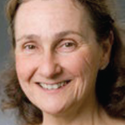
Blue Planet Studio / shutterstock.com
Psoriatic arthritis (PsA), scleroderma and lupus often require management input from both rheumatologists and dermatologists. Usually patients see the two specialists separately. Combining both in a single rheumatology/dermatology clinic appointment can improve outcomes and increase both provider and patient satisfaction.
“Physicians talk about tearing down silos of care, where each specialist focuses on their part and does not take into account what other specialties are doing,” says Evan L. Siegel, MD, a rheumatologist at Arthritis and Rheumatism Associates in Rockville, Md., just outside Washington, D.C. “That often doesn’t give the most appropriate form of care.”
2 Disciplines, 1 Time

Dr. Siegel
Having two different disciplines see the same person at the same time allows both physicians and the patient to discuss options in real time. Patients and physicians alike can think about the disease and discuss treatment issues from different angles.
Patients like the one-stop shopping experience of seeing both doctors at the same time without having to run around town or to another part of the office building.
“Patients get to hear the thought processes of both doctors, and it is not infrequent that the therapeutic direction changes,” says Dr. Siegel. “There is an increase in patient satisfaction when they are a part of a decision-making process involving all three parties.”
Lin A. Brown, MD, Dartmouth-Hitchcock Medical Center, Lebanon, N.H., and colleagues presented a poster at the 2014 ACR/ARHP Annual Meeting. They completed a retrospective chart review of patients in their combined clinic. They found these clinics simplified care and increased access. Patients received appropriate treatment sooner.1
Approximately 20 combined clinics exist in the U.S. Most are in academic medical centers, but there has also been growth in community practices.
Having two different disciplines see the same person at the same time allows both physicians & the patient to discuss options in real time.
Improved Inter-Provider Communications
Joseph F. Merola, MD, MMSc, a rheumatologist and dermatologist at the Brigham and Women’s Hospital in Boston, and others undertook a survey of combined practices as part of a study for the Psoriasis and Psoriatic Arthritis Clinics Multicenter Advancement Network Consortium (PPACMAN). He and his colleagues found the most common benefits reported were improved communication between providers, training opportunities, and more prompt, accurate diagnosis.2
“Every clinic, I learn a little more about the different skin manifestations of disease, different presentations and mechanisms of treatment that I wouldn’t be exposed to otherwise,” says Dr. Siegel. “The dermatologists learn how to do a joint examination, understand when a joint is swollen or undergoing a bony change and the different kinds of arthritis that can be present in patients with skin concerns.”
Stimulating to Both Specialties
These challenges and learning opportunities can be stimulating to both specialties. They tend to include more complex patients, and academic centers can include trainees in both disciplines, as well as medical students and other ancillary providers.
“We like people who are diagnostic dilemmas,” says Lin Brown, MD, clinical professor of medicine at the Geisel School of Medicine at Dartmouth, Hanover, N.H. “We see patients who have already been seen by either specialty and need another opinion.”
Dr. Merola notes many physicians find this a fun, fulfilling way to practice, which may also have an impact on burnout issues.
Local Situation

Dr. Brown
Many practices put the two physicians in the same room with the patient. Others may go to what Dr. Merola calls a virtual clinic, with structured and closely tied referral networks.
Although there are general models for structuring the rheumatology/dermatology clinic, the specifics are worked out according to the needs and requirements of the individual practices. A number of concerns must be negotiated by the physicians and practice managers.
“The biggest logistical problem is that dermatologists see patients much quicker than the rheumatologists,” said Dr. Brown. “When we see patients together, the rheumatology component slows down the number of patients the dermatologist can see.”
Productivity Concerns
This has impacts on section and physician productivity for the dermatology department.
Handling this disparity may be the most important decision to be made when considering how you want the combined clinic to work. Getting buy-in from partners, practice managers and other stakeholders needs to happen before a viable, long-term program is put in place.

Dr. Merola
How this works will be decided by the needs and requirements of practices. Some may look at treatment outcomes and decide to absorb the efficiency costs. There is a possibility of increased billing from higher complexity. Downstream income opportunities, such as additional reimbursement from radiology or increased patient satisfaction, may be available.
“Some places have had success by finding a workable ratio of patients per physician,” says Dr. Merola, who is also an associate professor at Harvard Medical School. “For example, in our clinic about three dermatologists feed one rheumatologist.”
Rotation of clinic participants can address productivity concerns. As the treatment picture becomes clearer, some patients may no longer need the more intensive features of the rheumatology/dermatology clinic and can be seen only by the specialty covering the most pressing problem.
Problems Magnified in Private Practices
These concerns are magnified in private practices. Fewer dollars may be available to cover differences in productivity. Community doctors may have to
consider travel time if the practices are not in the same group or are in different office buildings.
Reimbursement has not been an issue so far. Private and government payers allow both physicians to bill at regular rates. All three experts stressed that making sure the patient knows they are still responsible for two bills and two co-payments can reduce misunderstandings.
Division of Labor & Costs
Housing the clinic is another issue. Some may decide to set up the clinic in areas already used by one of the practices. Many use the dermatologist’s examination rooms because they have the tools needed for biopsies. Others may use rheumatology offices, with the dermatologist bringing what they need with them.
Other things to think about include compatibility of electronic health records systems. Addressing the division of labor, such as which practice does the scheduling, keeps all doctors on the same page. Will each physician provide their own assistants, or will support staff responsibilities fall on the home practice? Will overhead and other “soft” costs be apportioned?
“Another concern of community providers is that some physicians may be hesitant to refer to us because [they believe] we will keep their patients,” says Dr. Siegel. “We are very careful to send [patients] back as soon as possible to lessen these worries.”
Most dual clinics are started organically, by dermatologists with an interest in rheumatologic issues and rheumatologists curious about skin manifestations in their patients. This interaction at the individual level can be the catalyst behind the combination. More rarely, the practice administration starts the process.
In Sum
“Two kinds of physicians actually seeing the patient at the same time and discussing issues in real time brings tremendous benefit to the patient,” says Dr. Siegel. “We can think about their disease process from different perspectives and get a treatment plan taking all these perspectives into account.”
Kurt Ullman has been a freelance writer for more than 30 years and a contributing writer to The Rheumatologist for more than 10 years.
PPACMAN
The Psoriasis and Psoriatic Arthritis Clinics Multicenter Advancement Network Consortium (PPACMAN) was founded to study and facilitate the formation of multidisciplinary clinics.
“PPACMAN was developed with a mission to ‘nucleate psoriatic disease combined clinics and centers to advance a multi-level approach to psoriatic patients, increase disease awareness and accelerate management,’” says Joseph Merola, MD, the organization’s president. “Despite the fact that collaborative care is widely recognized as valuable, little is known about the logistical challenges, detailed benefits and impact on patient outcomes. We also believe these clinics serve as a crucial interface for collaborative research into psoriatic disease.”
The group established and expanded a network of combined clinics/centers focusing on clinical translational research goals. These include identifying mechanisms for improved psoriatic arthritis (PsA) screening, co-morbidity identification and management, and defining ideal care outcomes.
The goal of the Preventing Arthritis in a Multicenter Psoriasis At-Risk (PAMPA) Cohort Study group is to study the clinical, genetic, environmental and immune events during the natural history of psoriasis into PsA. It is trying to define high-risk individuals and predict and prevent progression to PsA among psoriasis patients.
The consortium has increased communication between established clinics and people interested in starting a new one by maintaining a list of dual specialty clinics on its website at www.ppacman.org.
PPACMAN also offers a toolkit with a set of electronic medical record templates and best practices for use in combined clinics.
References
- Sharma A, Brown LA, Barton D. Dermatologic rheumatism: Our experience with a multidisciplinary dermatology/rheumatology clinic. Presented at ACR/ARHP Annual Meeting. 2014 Nov. Boston. Abstract No. 113.
- Haberman R, Perez-Chada LM, Merola JF, et al. Bridging the gaps in the care of psoriasis and psoriatic arthritis: The role of combined clinics. Curr Rheumatol Rep. 2018 Oct 26;20(12):76.

